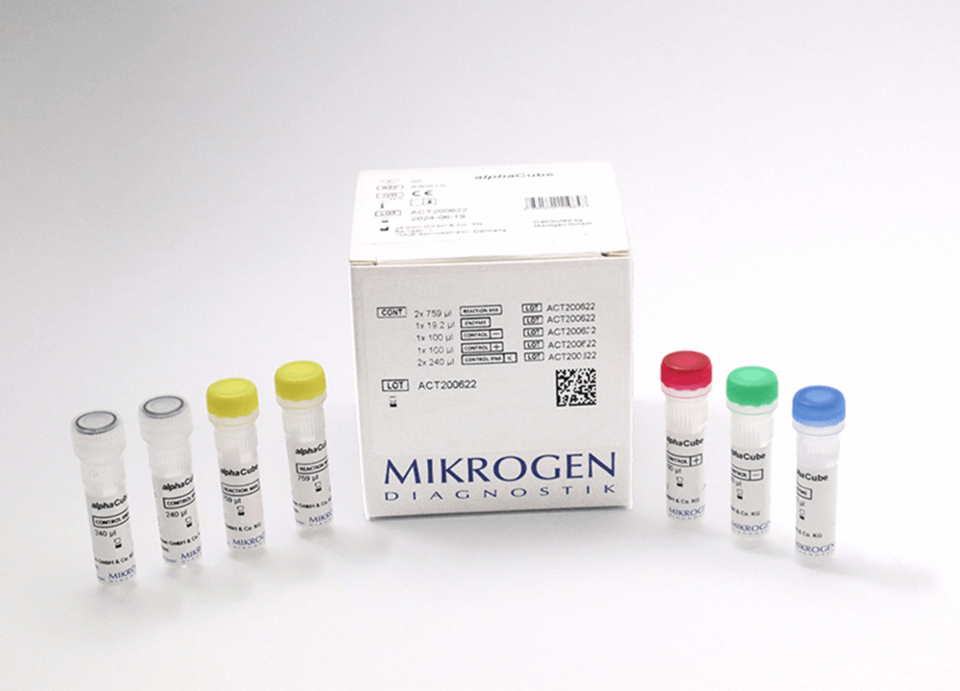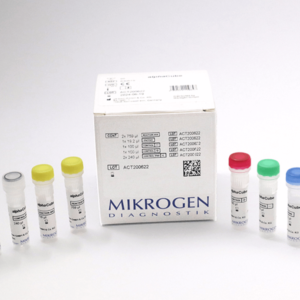| Weight | 1 lbs |
|---|---|
| Dimensions | 9 × 5 × 2 in |
| target | HSV/VZV |
| species reactivity | Real Time PCR for direct detection of Herpes Simplex Virus (HSV-1, HSV-2) and Varicella Zoster Virus |
| applications | RT PCR |
| assay type | direct & qualitative |
| available sizes | 96 tests |
HSV/VZV RT-PCR test Mikrogen 830572
$487.00
Summary
- Mikrogen diagnostik RT PCR kit for research use (RUO)
- Direct Herpes Simplex Virus (HSV), Varizella Zoster Virus detection
- High sensitivity and specificity
- Internal control for monitoring nucleic acid extraction
(RNA/DNA) and real-time PCR inhibition in each reaction - Compatible with most common real-time PCR cyclers & RNA/DNA extraction methods
- 96 tests
HSV/VZV RT-PCR test Mikrogen 830572
| kit | |||||||||||||||
|---|---|---|---|---|---|---|---|---|---|---|---|---|---|---|---|
| Assay type RT PCR | |||||||||||||||
| Research area Infectious Disease | |||||||||||||||
| Sample type whole blood, serum, plasma, urine, tissue, stool, etc., food and environmental samples or from the carrier material | |||||||||||||||
Notes
| |||||||||||||||
Components
| |||||||||||||||
| Storage Store at -20°C. | |||||||||||||||
| Additional information Highly sensitive and specific direct detection of pathogens that can cause tick-borne infections
Applicable to human starting material as well as RNA/DNA from the tick |
| target relevance |
|---|
| Organism Herpes Simplex Virus 1/2 |
| Protein names Herpes Simplex Virus (HSV) |
| Structure and strains Herpes simplex virus 1 and 2 (HSV-1 and HSV-2), also known by their taxonomic names Human alphaherpesvirus 1 and Human alphaherpesvirus 2, are two members of the human Herpesviridae family, a set of viruses that produce viral infections in the majority of humans. Both HSV-1 and HSV-2 are very common and contagious. They can be spread when an infected person begins shedding the virus. As of 2016, about 67% of the world population under the age of 50 had HSV-1. In the United States, about 47.8% and 11.9% are estimated to have HSV-1 and HSV-2, respectively, though actual prevalence may be much higher. Because it can be transmitted through any intimate contact, it is one of the most common sexually transmitted infections. |
| Detection and diagnosis An important field of application for HSV serology - also during latency - is the detection of serotype-specific HSV IgG antibodies in order to identify potential HSV carriers who could infect susceptible individuals. In particular, the identification of HSV 2 serotype-specific antibodies in pregnant women, who present a high risk of transferring the virus to a newborn child, is recommended. The serological typing of an HSV infection is usually performed by identifying IgG antibodies directed against the viral surface glycoproteins G (gG) of HSV 1 (gG1) and HSV 2 (gG2). Due to the fact that these antibodies are only produced some weeks after a primary infection, the determination of serotype-specific antibodies can also assist in the differentiation between primary infection and reactivation |
Data
| No results found |
Publications
| pmid | title | authors | citation |
|---|---|---|---|
| We haven't added any publications to our database yet. | |||
Protocols
| relevant to this product |
|---|
| 830572 protocol |
Documents
| # | ||
|---|---|---|
| Please enter your product and batch number here to retrieve product datasheet, SDS, and QC information. | ||
Only logged in customers who have purchased this product may leave a review.


Reviews
There are no reviews yet.